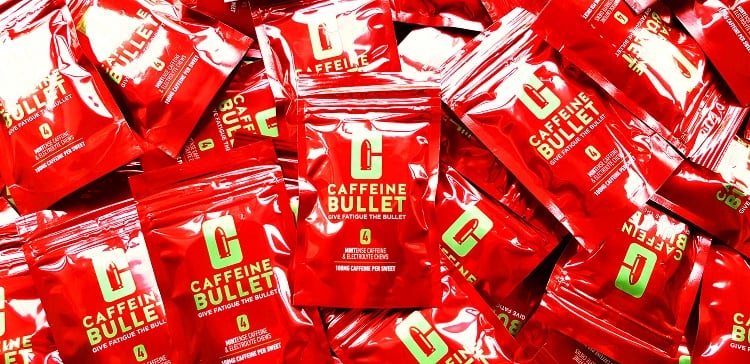'Caffeine Bullet' was developed by Clif Bar-sponsored British marathon and ultra-running champion David Hellard and initially launched in the UK back in April 2018. The endurance sports chew contains 100mg caffeine with a blend of four electrolytes, designed for a fast release of caffeine into the bloodstream during sport. The mint-flavored chew comes in a pack of four which, in total, provides the 400mg recommended daily dose of caffeine for adults, enabling athletes to stagger consumption throughout training or a race.
Caffeine Bullet will initially be made available on Amazon in the US with a longer-term goal of securing in-country distributors for specialty store listings within a year.
'A far larger endurance sports scene in the States'

David Hellard, founder and managing director of Caffeine Bullet, said the product had proved hugely successful in the UK and so shifting into the US as a next step was very exciting.
“Obviously, the US is a massive market which is very appealing,” Hellard told NutraIngredients-USA. “...There's also a far larger endurance sports scene in the States. It's more established and I think it's a larger community as well, particularly if you look at the number of races out there in the western states and the culture they have in Boulder, Colorado.”
Ironman, Spartan and Tough Mudder events all hailed from the US, he said, along with some of the biggest ultra-running races in the world.
“For us, the main ultra market in the world; the main endurance market in the world, is the States.”
Athletes in the US also had a strong link with the ethics behind nutritional products, he said, and triathletes especially were early-adopters of new products.
“The timing is good, particularly for marathon season but also triathlons. People are in their training seasons now and February/March is when people do tend to experiment with their nutrition, because you really need to try before race day. So, hopefully we'll be popping up in front of them at a time they'll be looking to experiment,” Hellard said.
Competing with coffee culture
One of the biggest challenges Caffeine Bullet would come up against in the US, Hellard said, was creating enough noise and impact in a market that was very familiar with caffeine.
Products like 5-hour Energy or caffeinated Moutain Dew, he said, were part and parcel of the ready-to-drink market and coffee sizes, in general, were far larger than what was typically consumed in the UK and Europe.
“We're no longer going to be a product where people are blown away by how strong [Caffeine Bullet] is or really feel an overwhelming response to the caffeine because actually we're nowhere near the strongest on the market.”
However, the caffeine chew was extremely convenient for the sports category – a proposition that did enable it to stand out, he said. The speed of the caffeine 'hit' was also a strong selling point.
“Because you activate the caffeine in Caffeine Bullet by chewing*, it actually hits the bloodstream far quicker than if you swallow caffeine (…) When you start to tire and take a Caffeine Bullet, you'll have your caffeine response in up to five minutes – that's how quick it can hit bloodstreams. A sports drink can be up to 25 minutes.”
Anything more than 20 minutes for an athlete, he said, was a considerable time and these minutes could create a “significant difference to performance”. Athletes trained for months, he said, simply to shave off a few minutes from their race time.
Vegan in the pipeline
Caffeine Bullet would eventually launch a vegan variant, Hellard said, as the current chew contained egg white as a binder and texture enhancer. Whilst 'aquafaba' or chickpea water was an initial alternative idea, he said the ingredient had proven too complex when working on a large scale. The vegan chew, he said, would more likely be made using blends of fruit pectins.
“It could be something we're lucky with, and find a formulation quite quickly, or it could be a long, drawn-out process,” he said.
* Reference: International Journal of Pharmaceutics, 2002, Volume 234, Issues 1–2, Pages 159-167, "The rate of absorption and relative bioavailability of caffeine administered in chewing gum versus capsules to normal healthy volunteers" by Kamimori et al.

